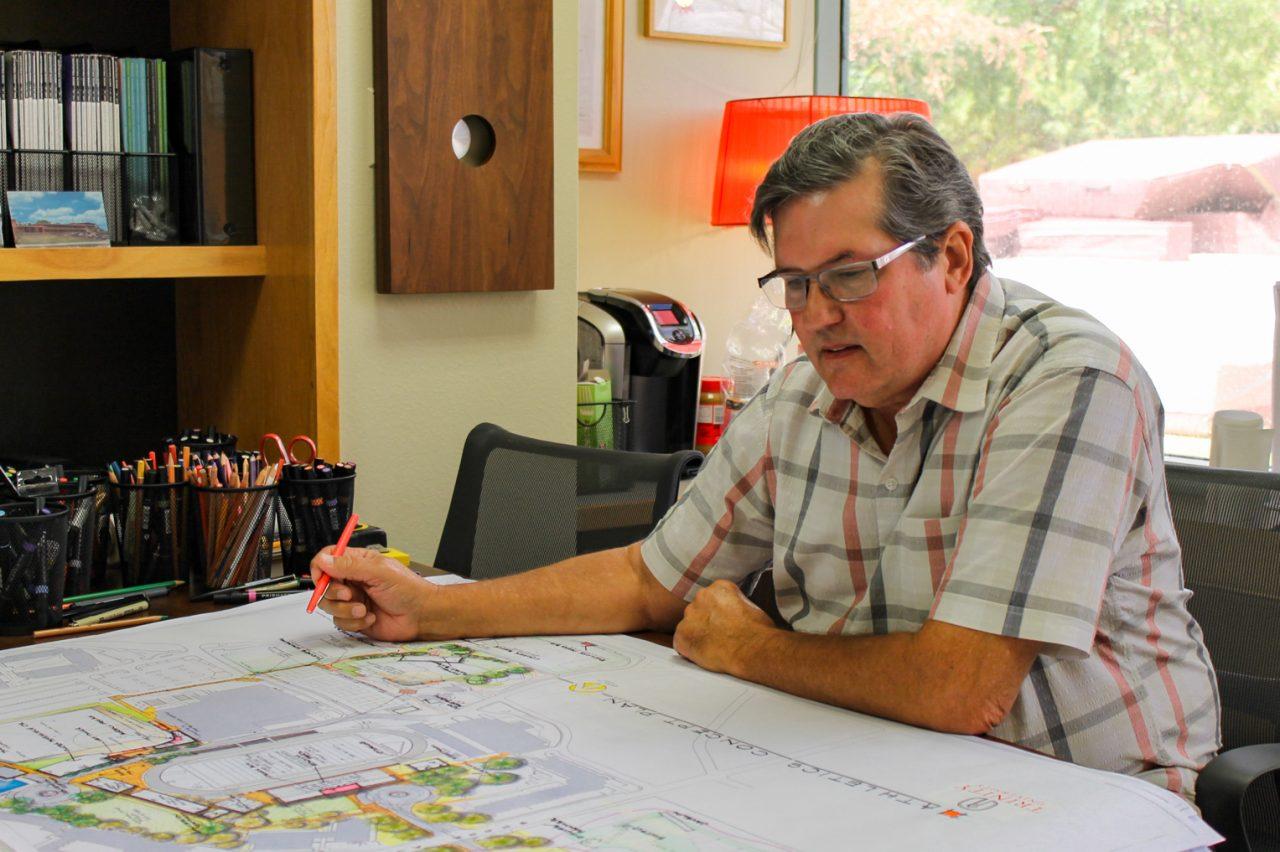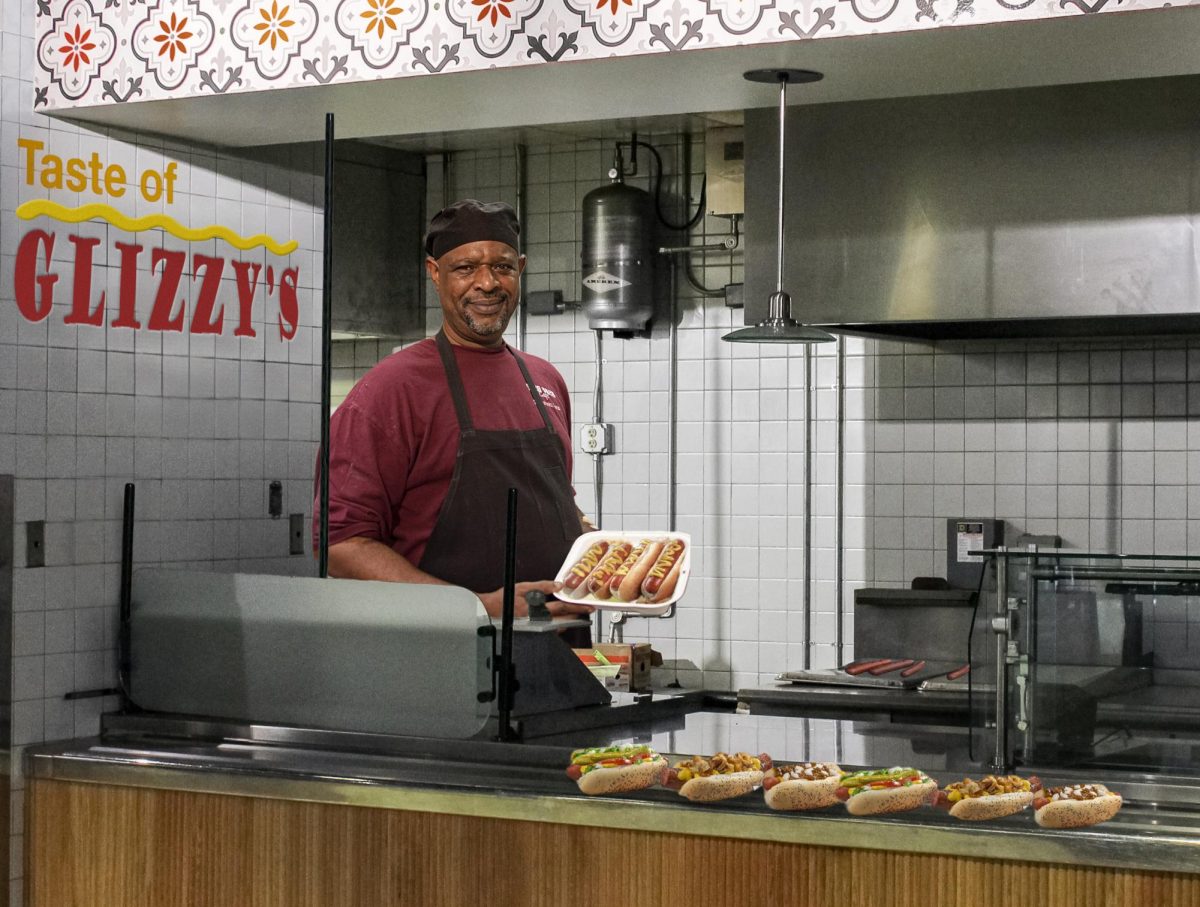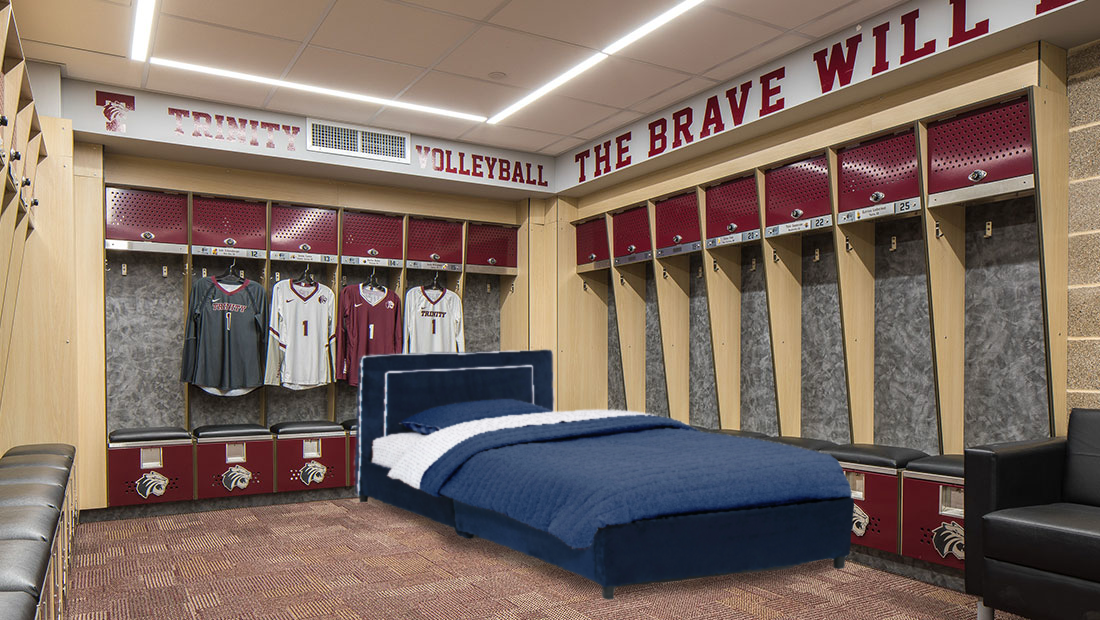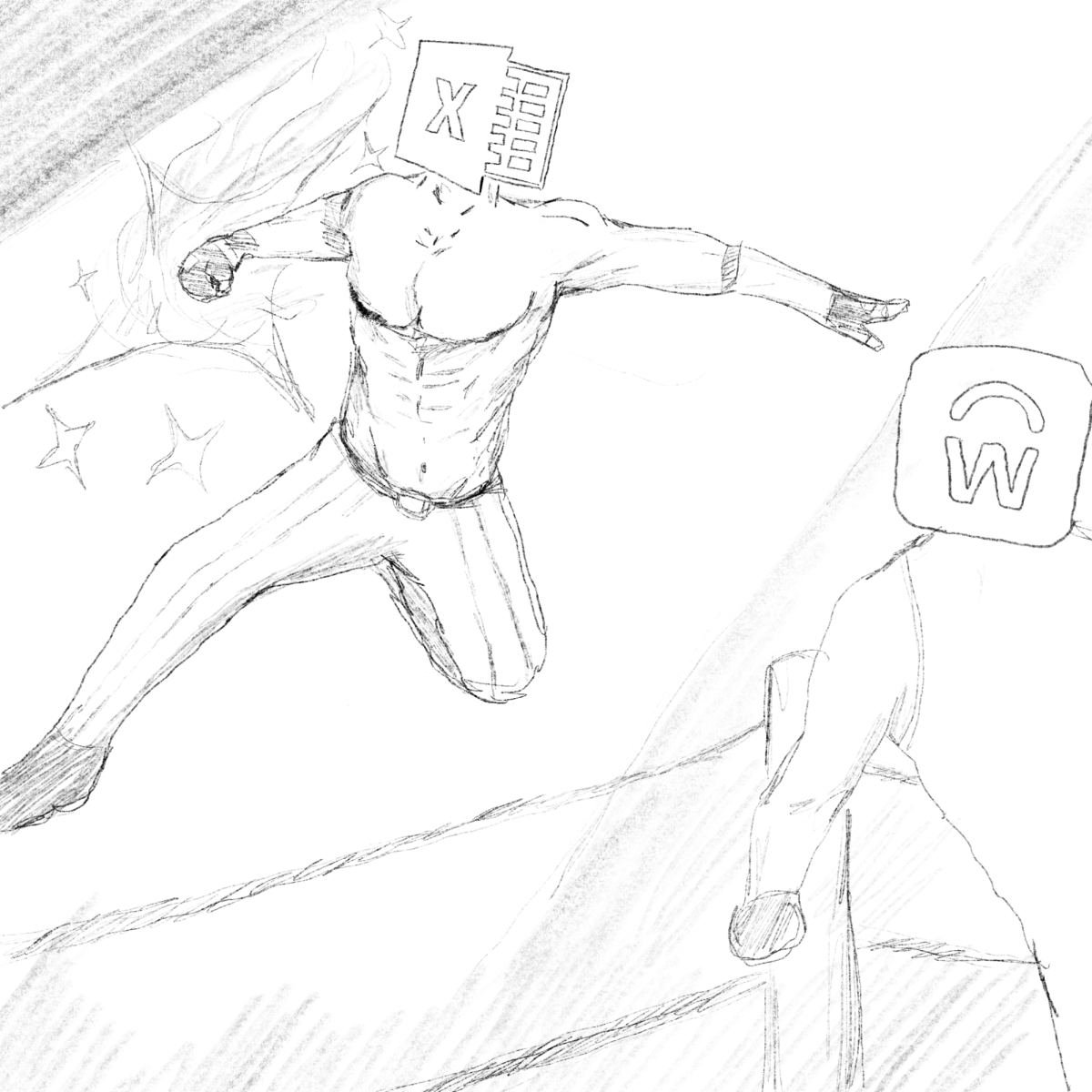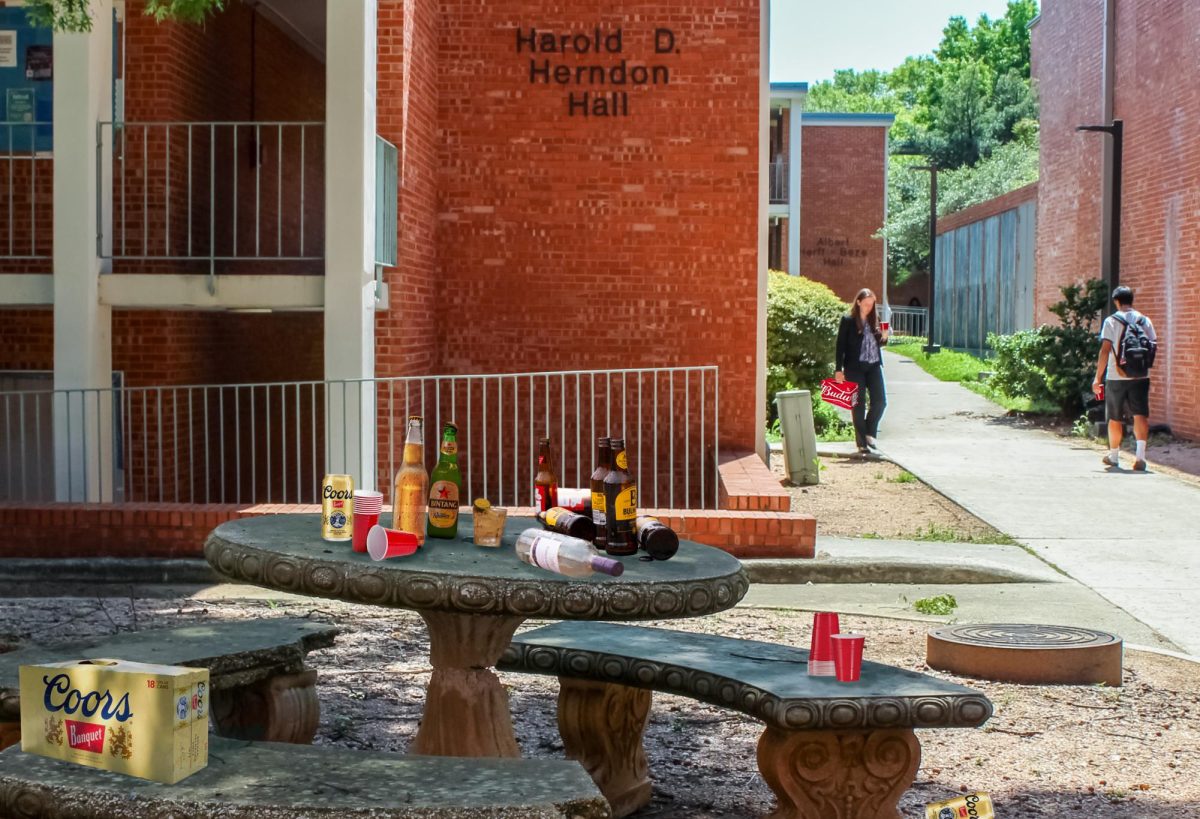Photo by Oliver Chapin-Eiserloh.
Correction: The original version of this article stated that the total project cost was $69.5 million and would be funded from university reserves.
Trinity’s Master Plan, approved in 2017, slates the Chapman-Hasell renovation to begin in 2020 and considers improvements to the main entrance, parking and athletics redesign.
The Master Plan is a part of Trinity Tomorrow, the university’s 10-year strategic plan, and it outlines the campus qualities that Trinity wants to achieve by 2027.
Gordon Bohmfalk, university architect and director of sustainability, explained that planning new architecture projects rests on three main components: the goals of the Master Plan, consideration for the National Historic Designation and the guidelines of the 12 general design principles.
“The Master Plan nudges us in a direction, and as we get into a more clear idea of what’s needed and the physical attributes of what’s on campus, we’re able to get down to a solution and actually a physical construction of the project,” Bohmfalk said. “The design guidelines are doing exactly the same thing. They’re ideas that we try to put into practice on new and older buildings.”
Harry Wallace, psychology professor, is one of the faculty members on the Master Plan Advisory Committee (MPAC), a group of Trinity faculty and staff who provided feedback during planning stages.
“The only thing that I could really make judgments about was just common sense and knowing what I know about the experience of being on campus. Thinking about, ‘Does that seem like it would be an asset to our campus? Does it seem reasonable?’” Wallace said. “It seemed like people had good ideas. It made sense.”
Updates to Chapman and Halsell have been under discussion since before the Master Plan was even completed because the buildings are not being used as initially intended (as the graduate library). The Chapman-Halsell Project, which will begin in Spring 2020, will renovate the buildings’ interiors and add a new building north of Halsell. The total project cost is $76.5 million and will come from gifts from donor and historical tax credits earned through sustaining the historical aspects of Trinity’s campus in the construction.
“The strategy was to improve the use of Chapman and Halsell, and that also resulted in a new building that would be on the north of that. It also creates a very unique condition for Trinity in that it sets itself up on an academic spine that goes all the way from Marrs McLean all the way through Chapman, Halsell and the new building,” Bohmfalk said.
The Master Plan also calls for a new main entry to Trinity aside from Northrup Hall. When Trinity was first built in San Antonio, Highway 281 did not exist. Those who worked on the plan believe the highway has jeopardized Northrup’s stance as Trinity’s main entrance. The start date and budget of this project have not yet been approved.
“It’s a little anticlimactic to come in. There’s no real parking. There’s no real front door. So Hildebrand was identified as a strategy to create a new entry that enters through the meadow and culminates in a welcome center. That’s something that’s in the works, and we’re looking at how we can design that sort of thing and hopefully get it moving ahead,” Bohmfalk said.
The third major project in the works is the idea of an athletics concept plan. Meetings are being held to discuss ideas, and concrete work should begin sometime in 2020, according to Bohmfalk. No budget has been set yet.
“The committee for the athletics concept is meeting to discuss priorities and a timeline for the numerous projects considered. We’re looking at how to do all of the same things that we’re doing on the north side of campus. How they can share facilities and how they can interact with each other,” Bohmfalk said.
Various residence halls, including South, Verna McLean, Herndon and Beze, received updates over the summer, totaling at $24.2 million. This came out of a separate budget which the university funded through reserves. The plan has no ordered list of projects to be done, but these renovations were given priority because of their age.
“They anticipated the residence halls needing some upgrading because they had lived way longer than their anticipated life. Those were mentioned in the Master Plan [and were] certainly on a list to have gotten done because of their age,” Bohmfalk said.
Other objectives from the plan were the search for upper-campus housing, which was completed after City Vista was acquired in 2017 for a $30.985 million loan agreement and will be paid off by 2048.
The Plan also addresses the lack of campus parking. While no start date or budget has been determined, Trinity purchased land on Shook Avenue and E Kings Highway in 2017, which will likely be used for parking. The amount spent is confidential.
“The Master Plan identified that we should remove parking and build a parking garage near the Bell Athletics Center. And, we haven’t initiated this yet, but we acquired nine acres across from Shook, and that’s most likely intended to solve a parking issue as well as some field sports. That’s kind of a checkmark for that strategy as well,” Bohmfalk said.
The Capital Projects Management Committee is one of the first steps for planning a new project under the Master Plan. The committee discusses projects, costs and funding sources, and the university then considers both approved and proposed projects for budgets.
“We look out 10 years into the future — look at projects that have been proposed tied to the Master Plan, and we try to assign a budget to them, just so we can see what the total impact would be, and then we look for ways that they can be funded,” said Diana Heeren, associate vice president for finance.
The athletics concept plan, the new Hildebrand entrance and the parking across from Shook are all projects in the planning phase. Their construction will begin once the project and budget are approved.
The Master Plan is due to be completed in 2027. While amendments can be made to it before then, Bohmfalk feels that there will not be any need.
“I think we are on course for completing the strategies without deviation. We’re hitting those strategies head-on, and I feel good about them. I think they’re really great things,” Bohmfalk said.

